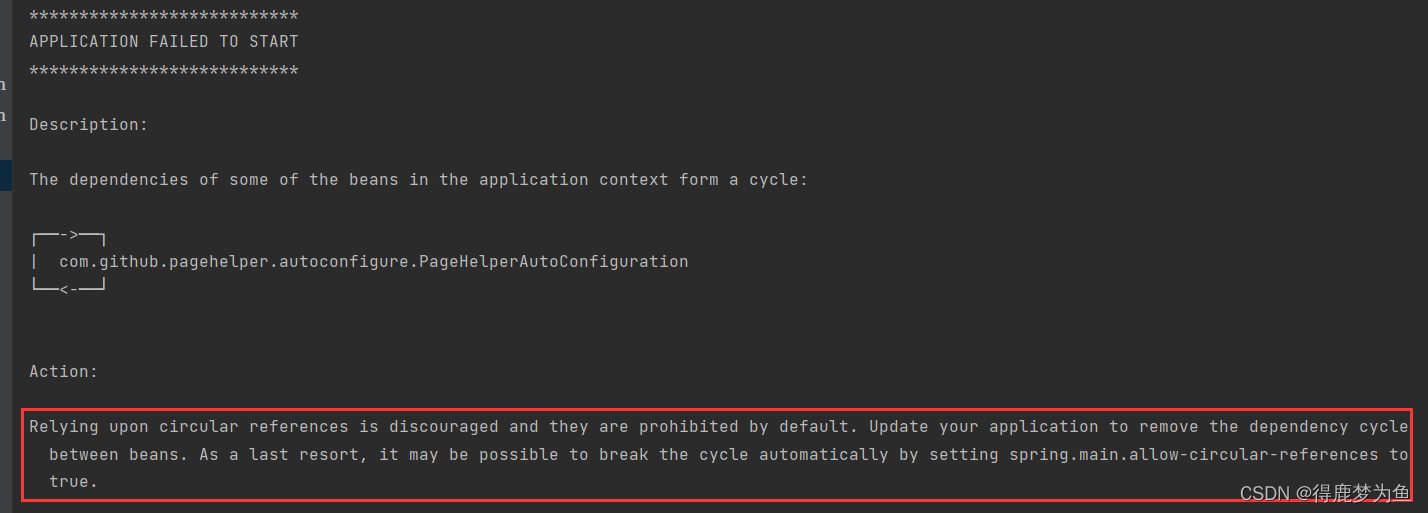在SpringBoot项目中,当启动项目后,报错:

方框的意思就是:
不鼓励依赖循环引用,并且默认情况下禁止循环引用。更新应用程序以删除bean之间的依赖循环。作为最后的手段,可以通过设置spring.main来自动打破这个循环。允许循环引用为true。
这是由于Spring Boot2.6版本之后关闭了依赖循环引用,从而导致了以上错误。
解决方法
可以在application.xml配置文件中的spring下添加配置来解决问题,即:

main:
# 解决升级Spring Boot2.6后,因依赖循环引用导致启动时报错的问题
allow-circular-references: true



















 384
384











 被折叠的 条评论
为什么被折叠?
被折叠的 条评论
为什么被折叠?








